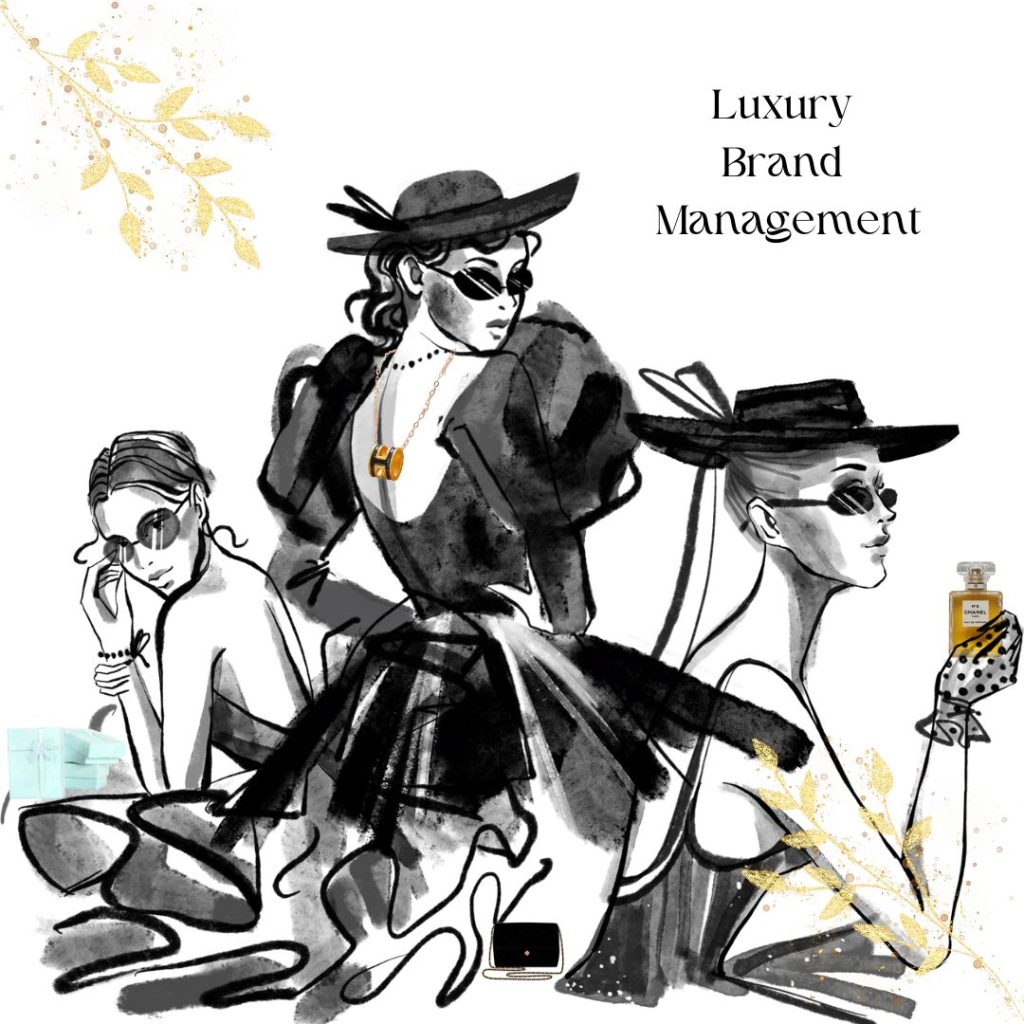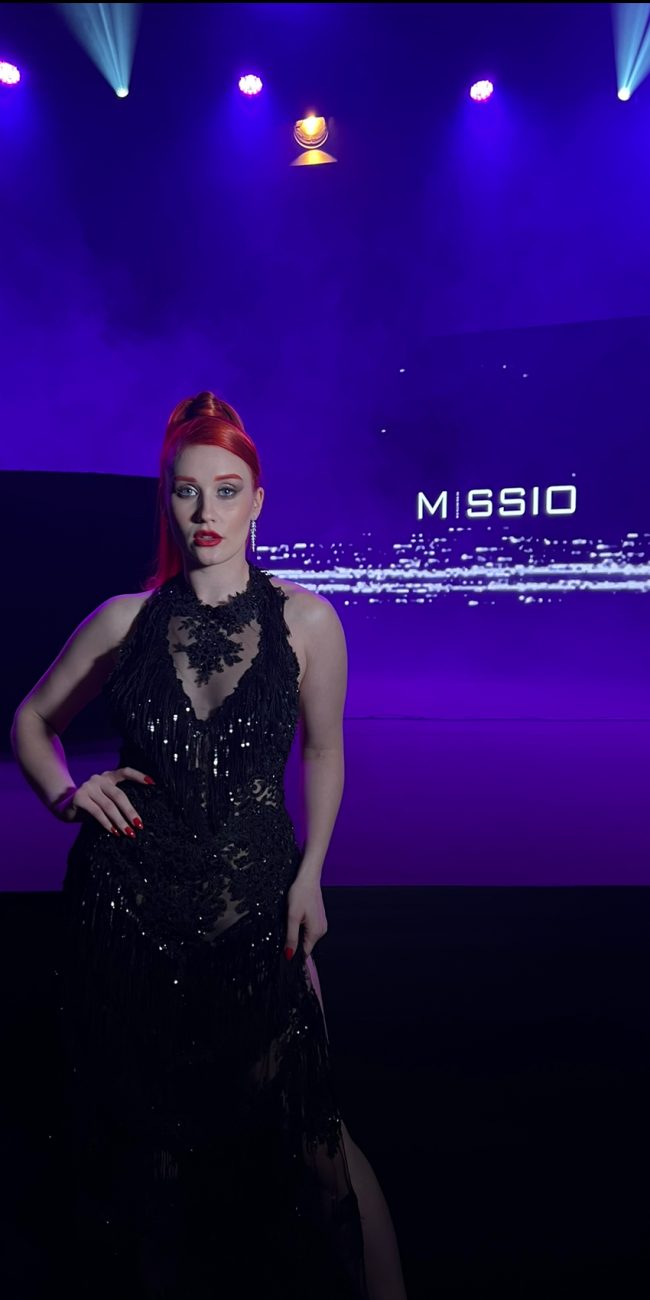
Luxury Brand Management
Esseen tyyppi: Akateeminen essee / 3 esseepistettä.
This essay will be diving into Luxury brand management and how Luxury brands are running their business strategies. I took a course heavily related to this topic and got really inspired about luxury brand management. I wish that sharing my knew gained knowledge will help aspiring luxury entrepreneurs. Read till the end to see what art has to do with all of this.
Definition of Luxury
By a definition Luxury is a culture, which means, to practice it, one must understand it first. As some luxury brands have changed their production to low-cost labour countries, it brings up a question; can these brands still be called luxury, as part of being luxury means, you’re being produced in France, Italy, or UK. To base on this definition Dior is no longer luxury as it has moved production outside of France (the country of its origin), whereas Hermès is truly luxury as its production is still fully in France. (Benabdeslem, 2022)
An important aspect of luxury definition is that it’s supposed to be timeless, and one could say “always in style”, unlike fashion that fades away according to seasons and trends. The positioning triangle helps to determine if a brand is truly luxury or not. Where a Hermès bag can be seen as timeless, rare (the brand minimizes its production), and a part of social elevation as gain something not many in society has, a bag at Zara is only in for a season, has a tribal sense as people having that bag belong to the “it” movement now, but it’s allure fades quickly over time. (Benabdeslem, 2022)
PIC 1: Positioning Triangle
Luxury Business model
Even luxury brands may differ in their business model, but because this essay is about luxury brand management, I want to focus on the luxury business model and how that can be defined and what are the key differences compared to other business models (fashion, premium or masstige also known as combination of mass production and prestige. In this chapter I dive deeply into the things that define a luxury business model and only talk about the others to create a comparison. Even with these definitions, it’s good to keep in mind, the definitions of luxury are very different for the public and the richest consumers. In the following table, you can see the overall differences in definition of different business models.

PIC 2: Business model operation comparison chart
A luxury business strategy does not pursue huge volume increases, as rarity is part of their value creation. For example, Hermès limits the production of its iconic Birkin bag through a deliberately created bottleneck, as production of one bag takes about 20 hours and the process of coaching a new bag maker takes at least months to master the exquisite craftmanship. Brand using luxury business strategy wants to integrate real craftmanship and personal human touch as a priority to their production. Customer having to wait for their Birkin bag is part of the strategy to create desirability, as the wating time makes getting the bag even more precious. It’s essential to luxury to be rare, which is why it’s often created from handmade parts. Reputation is more important to a luxury brand than volume, as growth is more about creating and maintaining good reputation. Comparing this to fashion, which is not rare at all as this strategy loves volume and only plays with the concept of rarity, in form of limited editions of its mass-produced products. (Kapferer, 2015)
As previously mentioned, luxury should be timeless and thus the luxury strategy aims for this as well. This means the luxury strategy aims on creating long sellers in a form of icons tied to the brands heritage and having its own legends, not one-time best sellers tied to a certain moment. Fashion strategy pushes consumers to buy things here and now, creating pressure for the consumer, which could not be further from what luxury strategy pursues. For luxury it’s normal for consumers to take their time in making purchase decisions, as the items are expensive and unless you’re ultra-rich, you need time to gather the money for your purchase. There is no rush to buy, as the pieces are timeless and non-comparable. (Kapferer, 2015)
Brand Management
The luxury market has become a financiers dream because of its massive growth. Some brands decide to stay independent and use that as a selling point, as they can be seen having full control of their operations. Luxury groups like LVMH search for brands that have potential to grow into the luxury status but are lacking the funding to reach it. (Kapferer, 2015)
It’s important to separate brand image from brand identity, even though these two are intertwined. Brand image is the perception customers have of your brand, it’s the emotions and beliefs they have created by your reputation. On the other hand, brand identity is how your brand wants to be introduced to the public, from the tone of language used to logos and aesthetic styles your brand builds up their identity. Brand identity is based on the heritage, values and truths of the company that are merged with idealism and inspiration. This creates the base from which you send a message to the public, letting them receive it, compare it to competitors and here thought from media and finally form image they see of your brand. (Benabdeslem, 2022)
The CEO of Hermès has stated that the company’s time should not be spent on cost reduction, but rather on creating value. This stems from the fact, that luxury brands are here to fight against boredom, and should be working on coming up with new, incredible, and rare materials that can be used to create one of a kind, timeless objects, rather than fighting over a price of alligator skin for example. (Kapferer, 2015)
Where the bag is made is an essential part of luxury brand strategy as it can be considered as part of the dream a consumer is buying into. Producing all Louis Vuitton handbags in France gives the brand an intangible value, which can be turned into high prices, as instead of just buying a product made in France, the consumer is buying a piece of French know-how and excellence. This is very different from fashion brands having most of their production in China. In the article Kapferer makes a good point of why a Chinese person would feel a Louis Vuitton bag bought from Paris is special, if it was produced in China. (Kapferer, 2015)
A luxury brand can extent to new product categories, but keep the productions in the house, because their greatest asset is their name, as it’s strongly tied to the heritage. If a luxury brand would license their product manufacturing, it would weaken the control they have over quality and might danger their reputation. When it comes to luxury strategy, the brand is responsible for all parts of value chain and thus luxury is not limited to one part but remains consistent throughout. As quality is high and the products are timeless, you’ll never see brands like Louis Vuitton have sales or discounts, since the price of a product in Luxury strategy is not dependant on the moment. It’s key to remember, luxury brands are selling a long-term value, while fashion brands focus on creating short-term value while something is ‘in’. (Kapferer, 2015)

PIC 3: Brand Image vs Brand Identity
Kapferers brand identity prism is a great tool for seeing the difference between brand image and brand identity, but it also helps you, when wanting to investigate your own brand and see how its seen by consumers. In the following picture, I have used Chanel as an example brand for the prism to show in practise how it’s used.

PIC 4: Brand Identity Prism Chanel
Factors for buying luxury
When buying luxury items, there are multiple reasons that determine consumer behaviours. It’s valuable to look at these reasons as they help us to understand how and why luxury purchases are made, which in turn is useful when building a luxury brand. The determinants affecting luxury buying behaviour are personal factors, psychological factors, social & cultural and factors related to luxury products.
Personal factors include things like once own shopping behaviour, if you’re used to buying luxury goods, you’ll most likely buy again. In these factors are also the desire to self-gift and personal value given to luxury goods. A person with high likeliness for personal factors is materialistic and rich. Most likely their personality affects their buying behaviour as they desire self-success. In this category, it’s important to think about the affects gender and age might also provide.
Looking at psychological factors, we find the symbolic and emotional value the purchase brings to consumer. This ties to the feeling of achievement through being able to save the money for something you’ve wanted for long. Factors for psychological reasons include motivation, purchase intention, hedonism, and perception. We may be buying because we want to reward ourselves, or maybe we have a perception of our selves deserving it. When looking at these factors, one must consider the effects of political ideology, self-esteem, and attitude as well.
In social and cultural factors are cultural norms that determine what is acceptable in society. If one buys for reason of wanting status differentiation, they wish to be seen by others as something better, something to be aspired. Big factors in this category are vanity, ethics, snob effect and religion. Snob effect is a situation when the demand for a product or service is higher from high income level people, when the demand is lower from those with low income.
There are a lot of factors related to luxury products themselves that affect the purchase behaviour of luxury consumers. To make it simpler I have attached a picture with these factors, as writing them here, would make it difficult to read. However, I’ll bring emphasis on a few, like the effect of quality and craftmanship, which both have been mentioned previously on this essay, when describing the distinct qualities of a luxury brand. When a person loves a brand strongly enough, it creates brand loyalty, which is something the luxury brands rely on. When one can identify with a brand, it automatically makes them love the brand even more. Part of creating this capability for people to identify with the brand is to make advertisement and share brand stories that resonate with consumers.

PIC 5: Factors related to luxury purchase behaviour
Luxury & Art
These two are in close relation to each other, they are overlapping at times, as you can consider a luxury jewellery as a piece of art, or even luxury clothing can be art and not only influenced by it. The importance and detail in aesthetics is mutual aspect of both. Another thing in common is the increase in value over time, as both categories will become more valuable as time goes on and the timeless sense adds value. Artists and luxury brands collaborate to break the boundaries between these two categories and combine them in unique ways. Some brands decide to take on approach to use art to modernize their brand image, which is something that Guerlain did in 2016 as they had a street artist JonOne creating a limited collection of their perfumes. JonOne created 25 unique pieces which gave this traditional brand a natural way of approaching younger consumers with colourful and spontaneous designs. (Benabdeslem, 2022)
In 2003 Louis Vuitton collaborated with Japanese artist Takashi Murakami to strengthen their foothold in the Japanese market. The collaboration was a huge success and the artist gained international recognition. For Louis Vuitton, they got from the collaboration, someone who knew the target market better than anyone working in the company and got a sense of uniqueness to their Japanese collection. Some collaborations draw negative reporting though, such was the case with an experimental collaboration Louis Vuitton had with Takashi Murakami in 2008. The artist installed a pop-up store showcasing their collaborating creations at the heart of a Museum of Contemporary Art during an exhibition, saying it’s a piece of art rather than a commercial section. The American art community was dwelling in scandal as this was seen of provocation against artistic values. The collaboration however was a success as products became best sellers. (Masé & Cedrola, 2017)

PIC 6: Value Luxury items with visual artistic elements bring
There are different forms of collaboration between art and luxury: artistic mentoring, foundations, patronage, and artistic collaboration. In the previous examples focused heavily on the artistic collaboration, in which an artist gives their handprint to luxury designs, this is the most used way of collaboration. Foundations, such as Fondation Louis Vuitton, are made to showcase contemporary art and keep the luxury brand relevant. In patronage the luxury brands help new artists to be seen. Perhaps the two most well-known collaborations of luxury and art, are Elsa Schiaparelli’s lobster dress collaboration with Salvador Dali 1936-1938 and Yves Saint Laurent’s Mondrian Collection in 1965 inspired by modern artists. Throughout time designers have been inspired by art and this drawing inspiration from dead artists art (Like Yves Saint Laurent with Mondrian collection) can be seen as collaboration with art heritage, as it draws from the immortal art. (Ochkovskaya, 2018)

PIC 7: Elsa Schiaparelli Lobster Dress & Yves Saint Laurent Mondrian collection
Conclusion
It’s interesting to see how unique collaborations with artists can raise the desire of buying luxury products as they create feeling of belonging in the art community and give inner pleasure of owning pieces of art. Overall, I believe luxury items should always be looked at as pieces of art, as they draw inspiration from peculiar places and their designers are setting the standards for fashion with their innovations. Fashion has its own museums now and luxury brands are building their own museums to showcase the art pieces created by legendary designers, which to me is a huge indication that the world is seeing luxury fashion as art.
Positioning oneself in the luxury sector takes time and work, which is why it’s important to use the tools provided to penetrate the market with less hassle. For a new fashion house, trying to break into the luxury sector, I think a great strategy, would be following the luxury business strategy and think carefully of the image wanted to be presented to the public. The best way to break through would be to have a collaboration with an artist or art heritage to be seen and taken seriously.
To any player in the luxury industry, it’s crucial to understand the factors affecting the purchase of luxury items, as it helps brand to reach new customers and keep building a strong connection to the once already interested in the brand. The key to a successful luxury brand in my opinion, is to be able to share the stories resonating with people and create as much brand love as possible.
Written By: Emilia Parikka
SOURCES:
Benabdeslem, F. 2022, Luxury Brand Management, Course, Taken in Autumn 2022.
Bertelli, P. 2012. Prada’s CEO on Staying Independent in a Consolidating Industry. Article. Published September 2012. Read: 12.01.2023. https://hbr.org/2012/09/pradas-ceo-on-staying-independent-in-a-consolidating-industry
Kapferer, J-N. 2015, Not all luxuries act alike, The distinct business models of luxury brands, Kogan Page: New York.
Masè, S. & Cedrola, E. 2017. Is the ratification process perceived by final consumers of luxury products? Study. Published July 2017, Read: 12.01.2023. https://www.researchgate.net/publication/318248160_IS_THE_ARTIFICATION_PROCESS_PERCEIVED_BY_FINAL_CONSUMERS_OF_LUXURY_PRODUCTS_RESULTS_FROM_AN_EXPERIMENT_BASED_ON_THE_APPLICATION_OF_THE_CUSTOMERBASED_BRAND_EQUITY_MODEL
Ochkovskaya, M. 2018. Collaboration with art in the luxury industry as a marketing tool for value creation. Academic Journal, Published December 2018. Read: 12.01.2023 https://www.researchgate.net/publication/330142664_Collaboration_with_art_in_the_luxury_industry_as_a_marketing_tool_for_value_creation
Roberta, V. 2021. Lessons in cultivating luxury: LVMH’s brand strategies and business model. Article. Published: 07.01.2021. Read: 12.01.2023 https://thestrategystory.com/2021/01/07/lvmhs-brand-strategies-business-model/



